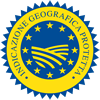Description
The Lenticchia di Altamura PGI refers to dried lentils of the Laird and Eston varieties, belonging to the species Lens culinaris Medik.
Production Area
The production area of Lenticchia di Altamura PGI comprises the municipalities of Altamura, Ruvo di Puglia, Corato, Poggiorsini, Gravina in Puglia, Cassano delle Murge, Santeramo in Colle in the Province of Bari, and the municipalities of Andria, Minervino Murge, Spinazzola in the Province of Barletta-Andria-Trani, in the Apulia region; the municipalities of Montemilone, Palazzo San Gervasio, Genzano di Lucania, Banzi, Forenza, Tolve in the Province of Potenza, and municipalities of Irsina, Tricarico, Matera in the Province of Matera, in the Basilicata region.
Production Method
One of the basic characteristics of the cultivation of Lenticchia di Altamura PGI is that it cannot be alternated with other legume crops. Sowing takes place between November and March, with the choice of date varying according to the environment and cultivation method used. The product undergoes disinfestation treatments within 24 hours of the harvest, and is then washed to separate any foreign bodies. The lentils then undergo a visual inspection to ensure a uniform seed size. Once any accidentally present pieces of metal are removed, the product is then stored in Big Bags lined with plastic material, or in silos.
Appearance and Flavour
Lenticchia di Altamura PGI is round and flat, and characterised by its various shades of green and brown, which depends on how ripe the lentils are when harvested, as well as its size: the Eston variety has a diameter ranging from 3 to 4.9 mm, while that of the Laird variety can be anything from 5 to 7 mm. It is sweeter than other Italian lentils, and has a distinctive grassy, aromatic flavour.
History
The Lenticchia di Altamura PGI was traditionally considered a product of the local family farm economy. In the 1930s, it started being exported to domestic and international markets. Around the 1970s, a number of factors, such as the abandonment of rural areas and the importation of low-cost lentils, almost caused the crop to disappear entirely. It experienced a revival in the early 2000s, thanks to the decision to take advantage of the soil’s ideal characteristics and to practice crop rotation. The first Lenticchia PGI Festival was held in 2018, organised by the Protection Consortium to demonstrate the fundamental role of Lenticchia di Altamura PGI in the agricultural, gastronomic, historical and cultural heritage of today’s production area.
Gastronomy
Lenticchia di Altamura PGI will keep longer if stored in a cool, dry place. Being larger than other types of lentils, it needs to be soaked and cooked for a longer length of time. This makes it particularly suitable for broths, minestrones and soups; a traditional example is Lenticcha di Altamura PGI broth with sausage and Pane di Altamura PDO crostini. It is also excellent as a side dish, in salads or served with meat and fish, with a drizzle of oil and a pinch of oregano, or cooked with tomato sauce and bay leaves. From a nutritional point of view, it is rich in iron, carbohydrates and proteins, yet easily digestible thanks to the high content of fibre, mineral salts and vitamins.
Marketing
Lenticchia di Altamura PGI must be put on the market in food-grade packets with a maximum weight of 10 kg. For wholesale transactions only, the product can be packaged in Big Bags with a maximum capacity of 3000 kg, or in food-grade bags with a maximum capacity of 25 kg.
Distinctive Features
Thanks to the properties of the soil in the production area, Lenticchia di Altamura PGI contains a greater amount of iron than other cultivated varieties. This microelement promotes the production of haemoglobin and red blood cells, and is essential for maintaining immune response.













